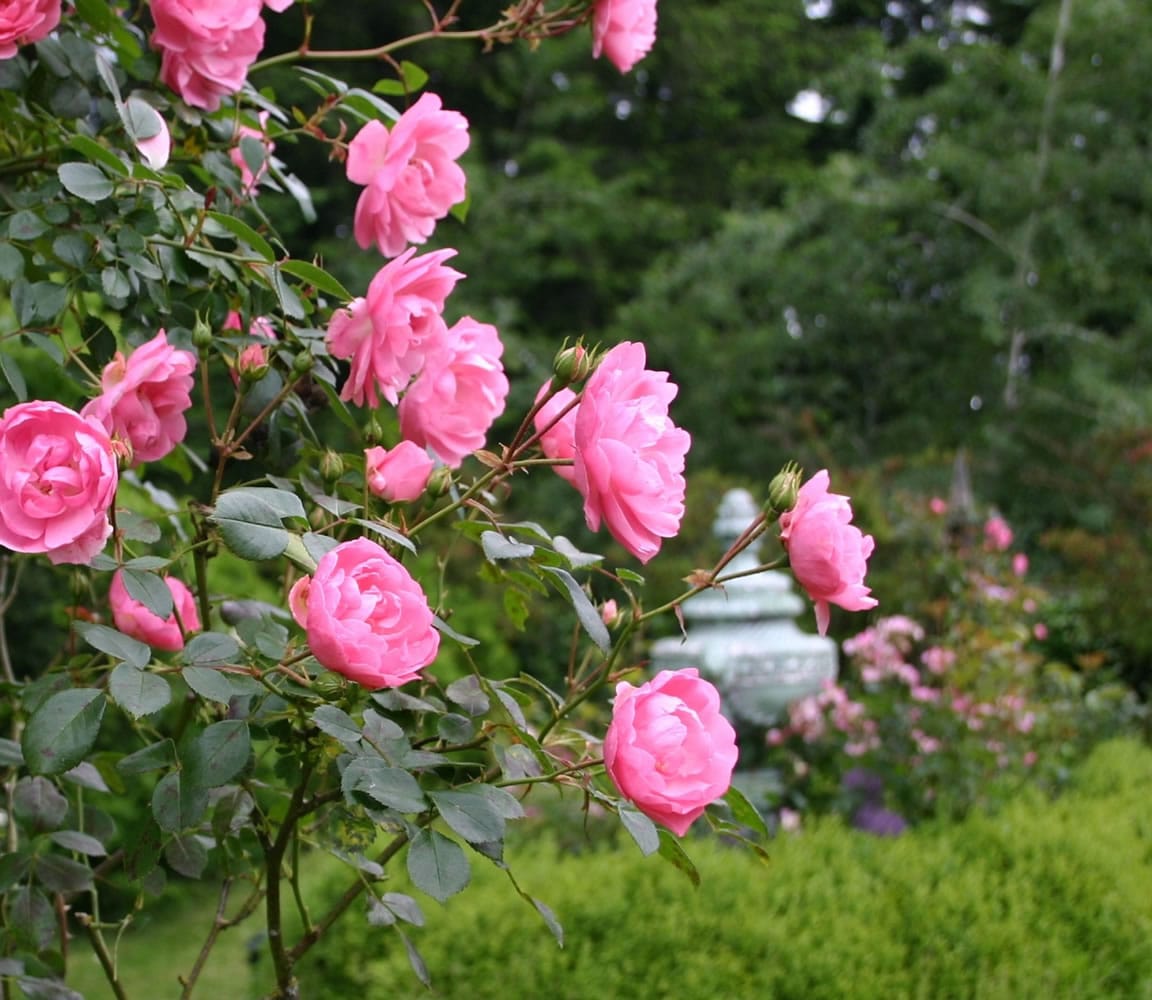Along with our gardening enthusiasm, visitors to Southwest Washington are impressed by the vigor and bounty of our plant collections. Few places in the world are blessed with an environment in which so many types of plants grow and thrive. The nursery industry acknowledges our interest in an ever-expanding plant palette and fans our desire by producing more and better varieties of plants with longer bloom and more striking foliage.
When the options are limitless, we need to establish our own set of guidelines as to how far we are willing to go. Few of us have the space in our gardens or the money in our bank account to actually buy every plant made available to us. Besides, there is a fine line between a texturally bountiful perennial border and an overgrown conglomeration of plants. The former is more likely with a limited palette. Consider, also, that every new plant has to join an existing family of plants in the garden.
I can suggest one key to controlling the urge to add every plant that crosses your path to your ever expanding collection. Whenever you think about buying a plant, stop and remind yourself that you have to find a place in the garden to plant it, you have to dig a hole and put it into the ground and then you have to take care of the plant for the rest of its life. That scenario adds a dash of temperance to the most avid collector. Choose wisely.
Stewartia japonica “Pseudocamellia” is my favorite four-season tree, with burgundy-orange autumn foliage, mottled cinnamon and khaki bark in winter, bright new-green leaves in spring and small, white flowers with yellow anthers in summer. This is one of the best flowering trees for the Northwest garden, and it’s in full flower in mid-summer, a rarity this late in the season. The flowers give this tree its name because of their resemblance to the blossom of the classic camellia.
The most important job of the summer season is maintaining the elements that your plants need to perform at their peak. Water, nutrients, friable soil, air and sunlight are all essential to a plant’s well-being. Drip irrigation is good for vegetable gardens where plants are well-spaced and the purpose is to deliver water only to the roots of a specific number of plants. A separate bed with four tomato plants can be set up with exactly four drippers delivering a gallon of water an hour to each plant.
Small soakers and spray heads can be connected to this system for the strawberry patch, berry bushes or a raised bed of asparagus. While you’re taking care of a plant’s watering needs, you should also take care of fertilization requirements. Give your plants the nutrients they need if you expect them to perform well. Rhododendrons, camellias and azaleas are setting flower buds now. Fertilize with a product specifically designed for broadleaf acid loving plants. The quality of next year’s bloom depends on the plant’s condition today.
Deep watering will assure the plant’s ability to absorb nutrients. Consistent deadheading on any plant will directly affect the duration of that plant’s bloom period. If you don’t cut off old, spent flower blooms, the plant has no reason to produce more blossoms. Roses, pincushion flowers (Scabiosa x hybrids), coreopsis and many geraniums will also rebloom before the season is over if deadheaded consistently.
A balanced, organic 5-5-5 product will release essential elements evenly into the soil over the remaining weeks of summer. While you are out deadheading, carry a debris bag so you can remove and destroy diseased leaves as you find them. Cut back tattered foliage, too. This alone will improve the overall look of every flower border. Large- leaved hosta, hotly colored geum, vibrant heuchera and many other durable perennials will sprout new, fresh leaves if old ones are cut back.
Time to evaluate
One additional job that will add to your garden’s future success is a mid-summer evaluation. Take a tour of your garden with a critical eye. Slow down and enjoy those areas of the garden that please you. If you took the time to add a seating area, sit. Make a note of areas that don’t quite work and consider why that is so. Is there a group of plants that just aren’t performing? Can you move them? How about a bed that fails to draw your eye or catch your interest? Do you need a focal point such as a statue, pergola or water feature to bring an area together? This is the garden equivalent of soul-searching. Be honest, and you’ll get what you want in the end.
Robb Rosser is a WSU-certified master gardener. Reach him at Write2Robb@aol.com.



